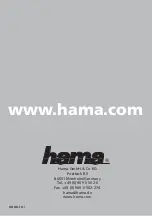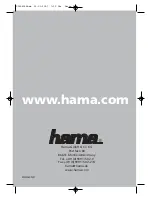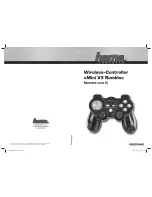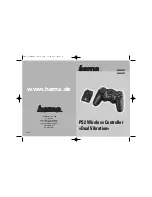
1
MT-500 series
MT-506T, MT-506S,
MT-506L
Installation Instruction
1.0 Installation and Startup Guide
Install Environment
Where
Used
The MT-500 Series is designed for use in a factory environment. It is designed to
operate from 32 to 113 °F (0 to 45 °C) temperatures, as found in most industrial
environments. It may not be suitable for use in certain outdoor applications. Please
consult the factory for advised usage in outdoor applications.
NEMA
Rating
The MT-500 Series front bezel is NEMA 4 rated. When installed properly in a NEMA
4 panel, the NEMA 4 rating of the panel will not be compromised. This means that
fluids will not enter the panel during wash downs.
Electrical
Environment
The MT-500 Series has been tested to conform to European CE requirements. This
means that the circuitry is designed to resist the effects of electrical noise. This does
not guarantee noise immunity in severe cases. Proper wire routing and grounding
will insure proper operation.
Mechanical
Environment
Avoid installing units in environments where severe mechanical vibration or shocks
are present.
2.0 Installation Instructions
2.1 Mounting Instructions
2.1.1 Location Considerations
Care should be taken when locating equipment behind the unit to ensure that AC power wiring, PLC
output modules, contactors, starters and relays, and any other source of electrical interference are located
away from the back of the unit.
Particular note should be taken to the position of variable speed drives and switching power supplies.
Their input and load cables should be screened to a central star earth point.
2
2.1.2 Making a NEMA-4 Mounting
Panel
Details
The unit can be mounted into panels with a depth of 4”(105mm). It is recommended that
the unit be mounted on the front panel of a steel enclosure, through an appropriate
opening*. Allow a clearance of 1”(25mm) around the sides of the unit for mounting
hardware. Allow clearance for cable connections to the back of the unit. Unit depth may
vary according to cable type used. Typically, plan a depth to accommodate at least
4”(105mm) behind the panel.
NEMA-4
Mounting
Put the unit through the panel cut out. Slide the clamps into the 6 holes provided around
the case. Tighten the clamping screws in an even pattern until the unit is secured in the
panel.
Caution!
Do not over tighten mounting clamps!
Note:
Specifications
Note: To seal to NEMA-4 specifications, all supplied mounting clamps must be used and
panel cannot flex more than 0.010”.
2.1.3 Environmental Considerations
The MT-500 are to be used indoors as built in displays. Make sure that the displays are
installed correctly and that the operating limits are followed (See Specifications).
Do not operate the unit in areas subject to explosion hazards due to flammable gases,
vapors or dusts.
The unit should not be installed where fast temperature variations and/or high humidity
are present. This will cause condensation of water in the device.
Do not install these terminals in environments where have inflammable gases.
2.2 Power Connections
Make sure that all local and national electrical standards are met when the installing the unit.
Contact your local authorities to determine which codes apply.
2.2.1 Power Requirements
Power
The MT-500 can be powered by DC power only. The specified voltage range
is +21 to 25 Volts DC. This insures compatibility with most controller DC
systems.
The power conditioning circuitry inside the unit is accomplished by a
switching power supply. The peak starting current can be as high as 700mA.
Fusing
Requirements
If the display does not come on within 2 seconds of power up, remove
power. An internal fuse will prevent damage if the polarity of the DC power
is incorrect. Check wiring to insure proper connections and try to power up
again.
Caution
High Voltage
An Internal fuse will prevent damage for over voltage condition however it
isn’t guaranteed.
DC voltage sources should provide proper isolation from main AC power
and similar hazards.
Caution
Emergency Stop
A Hard-wired EMERGENCY STOP should be fitted in any system using an
MT-500 to comply with ICS Safety Recommendations.
Caution
Supply Voltage
Condition
Do not power the MT-500 and inductive DC loads, or input circuitry to the
controller, with the same power supply. Note: The 24 VDC output from
some controllers may not have enough current to power the MT-500.
3
Caution
Wire Routing
Wire lengths should be minimized (Maximum 1600’ (500 m) shielded,
1000’ (300 m) unshielded).
Wires should be run in pairs with a neutral or common paired with a hot or
signal line.
If wiring is to be exposed to lightning or surges, use appropriate surge
suppression devices.
Keep AC, high energy, and rapidly switching DC wiring separate from
signal wires.
Equip ungrounded DC supplies with a resistor and capacitor in parallel to
earth ground. This provides a path for static and high frequency dissipation.
Typical values to use are 1MOhm and 4700pF.
Connection
To make a connection, strip about 3/8” of insulation off the end of the wire,
turn the connector screw counterclockwise until the gap is wide open, insert
the wire all the way in, and turn the screw clockwise until it’s tight.
Connect positive DC line to the ‘+24V’ terminal and the DC ground to the
‘0V‘ terminal.
2.2.2 Grounding Requirements
Chassis ground must be used. DC ground is not directly coupled to Earth
ground internally. It is preferable not to ground DC negative return to chassis
ground as poor site earths can introduce noise into a system, but if necessary
an earth connection should be made, from the power supply return point to
the central star earth point. Ground conductors should be as short and as large
in size as possible. The conductors must always be large enough to carry the
maximum short circuit current of the path being considered. Ground
conductors should be connected to a tree from a central star earth ground
point. This ensures that no ground conductor carries current from any other
branch.
2.2.3 CE Requirements
To make an MT-500 comply with EMC directives, and to reduce susceptibility to electrical
interference, a separate #14 AWG ground wire should be taken to the chassis ground terminal of the
power connector. This ground connection should be run directly to the central star earth connection
point (as recommended in most Installation Instructions).
2.2.4 Safety Guidelines
This section presents recommended installation practices, and procedures. Since no two
applications are identical, these recommendations should be considered as guidelines.
Hardware
Considerations
WARNING!
The system designer should be aware that devices in Controller systems could
fail and thereby create an unsafe condition. Furthermore, electrical
interference in an operator interface, such as an MT-500, can lead to
equipment start-up, which could result in property damage and/or physical
injury to the equipment operator.
If you, or your company, use any programmable control systems that require
an operator or attendant, you should be aware that this potential safety hazard
exists and take appropriate precautions. Although the specific design steps
depend on your particular application, the following precautions generally
apply to installation of solid-state programmable control devices. In addition,
these precautions conform to the guidelines for installation of Controllers as
recommended in the NEMA ICS 3-304 Control Standards.
Programming
Considerations
To conform with ICS Safety Recommendations, checks should be placed in
the controller to ensure that all writable registers that control critical parts
of plant or machinery have limit checks built into the program, with an
out-of-limit safe shut down procedure to ensure safety of personnel.
4
ICS 3-304.81 Safety Recommendations:
Consideration should be given to the use of an emergency stop function, which is independent of the programmable
controller.
Where the operator is exposed to the machinery, such as in loading or unloading a machine tool, or where the machine
cycles automatically, consideration should be given to the use of an electromechanical override or other redundant means,
independent of the programmable controller, for starting and interrupting the cycle.
If provision is required for changing programs while the equipment is in operation, consideration should be given to the
use of locks or other means of assuring that only authorized personnel can make such changes.
These recommendations are intended as safeguards against the failure of critical components and the effects of such
failures or the inadvertent errors that might be introduced if programs are changed while the equipment is in operation. *
The ICS 3-304.81 Safety Recommendations are reproduced by permission of the National Electrical
Manufacturers Association from NEMA ICS 3-304
2.3 Communications Connections
The ports as you look at the back of the case, are the ports for connecting to a printer, PLC or some
external device (Controller Connectors).
2.3.1 Connection to an External Device
Cable
Requirements
Different cables are required for various devices.
Caution
Restrict cable length to less than 500’ (150m) for RS485/422 devices and 50’
(15m) for RS232 devices to avoid communications problems.
Communications problems cause the display to show “PLC no response...”
until communications can be established. The COM light on the front of the
MT-500 will turn on with each communication.
Shielded cable must be used for long lengths or cables run in an electrically
noisy environment.
Do not run cables next to AC power lines or near sources of electrical noise.
Be sure that the cable ends have been inserted all of the way into mating
connectors and are secure.
Pin Designations
PLC [RS-232]
Pin assignment of the 9 Pin, Female, SUB-D, PLC [RS-232] Port. This port
is used for connecting the MT-500 to a controller.
Note:
This port is not used for programming the MT-500 or for printing
functions.
Pin# Symbol PLC
[RS232]
AUX[RS232]
(only E4 series)
1 Aux_TxD
Transmitted
Data
2 TxD Transmitted
Data
3 RxD Received
Data
4 Not
used
5 GND
Signal
Ground
6 Aux_RxD
Received
Data
7
CTS
Clear to send input
8
RTS
Ready to send output
9 +5V




















